How to Safely Dispose of E-Cigarettes: Information for Schools
E-cigarettes are hazardous waste!
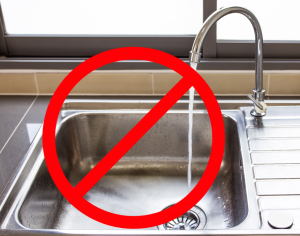
Stop! Do not…
1) Put nicotine e-liquids down the drain
2) Rinse or wash e-liquids out of e-cigarettes or containers
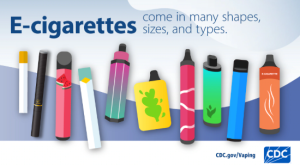 E-cigarettes go by many names and have many designs. E-cigarettes are sometimes called e-cigs, vapes, vape pens, and electronic nicotine delivery systems or ENDS. Some e-cigarettes look like regular cigarettes, cigars, or pipes. Some look like USB flash drives, pens and other items.
E-cigarettes go by many names and have many designs. E-cigarettes are sometimes called e-cigs, vapes, vape pens, and electronic nicotine delivery systems or ENDS. Some e-cigarettes look like regular cigarettes, cigars, or pipes. Some look like USB flash drives, pens and other items.
E-cigarettes contain lithium batteries and nicotine
One thing that all e-cigarettes have in common is that they contain nicotine and lithium batteries, making them hazardous waste.
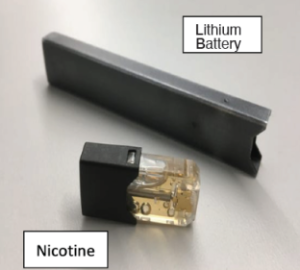
Nicotine is acutely toxic. Liquid nicotine in e-cigarettes can be easily absorbed by the skin, potentially causing nicotine poisoning with symptoms that include difficulty breathing, fainting, or seizures. Nicotine e-liquid is an acute hazardous waste with the RCRA hazardous waste code P075 (nicotine, & salts).
Lithium batteries can catch fire, especially when damaged. When placed in trash and recycling bins, lithium batteries often get damaged by trash compactors and can cause fires during transportation and at waste and recycling facilities. Most lithium batteries, when discarded, would likely be considered ignitable and reactive hazardous waste (RCRA hazardous waste codes D001 and D003, respectively).
STEPS to the DISPOSAL of E-CIGARETTES
Step 1: Safely store collected e-cigarettes before disposal.
Intact e-cigarettesPlace each individual e-cigarette in a separate |
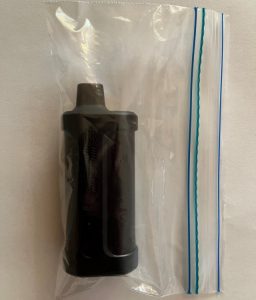 |
|
|---|---|---|
Lithium BatteriesPlace each individual lithium battery in a separate
|
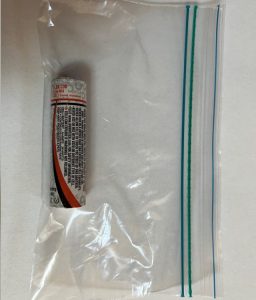 |
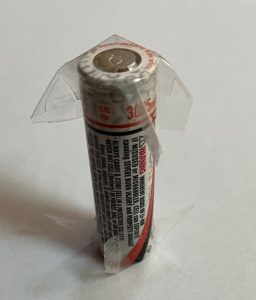 |
Nicotine e-liquids (vials or loose cartidges/pods)Place nicotine e-liquid vials, cartridges, and pods in
|
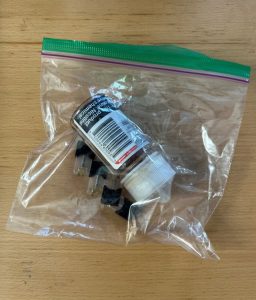 |
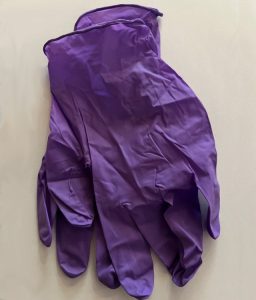 |
Step 2: Determine your hazardous waste generator category
Your school’s options for disposing of your hazardous waste depend on how much hazardous waste your school generates per calendar month.
There are three hazardous waste generator categories – very small, small, and large quantity generators. Below are details about these categories and the amount of hazardous waste that schools or businesses would generate per month to land in each category.
| Acute hazardous waste | Non-acute hazardous waste | |
|---|---|---|
| VSQG Very small quantity generator |
≤ 1 kilogram (2.2 pounds) | ≤ 100 kilograms (220 pounds) |
| SQG Small quantity generator |
≤ 1 kilogram (2.2 pounds) | > 100 kilograms (220 pounds) and < 1000 kilograms (2,200 pounds) |
| LQG Large quantity generator |
> 1 kilogram (2.2 pounds) |
≥ 1000 kilograms (2,200 pounds) |
**Even if your school generates less than one kilogram (2.2 pounds) of acute hazardous waste each calendar month, your school will become an LQG if you accumulate more than one kilogram (2.2 pounds) of acute hazardous waste on site.
We recommend that you send the collected e-cigarettes off-site on a regular basis to avoid accumulating one kilogram (2.2 pounds) of acute hazardous waste and becoming an LQG.
Counting all hazardous waste
You must add up ALL the hazardous waste that your school generates on site in a calendar month – not just the e-cigarettes and e-liquids – to determine your generator category. A few examples include:
- Lithium batteries from electronic devices
- Laboratory chemicals
- Expired hand sanitizer
- Cleaning supplies
- Pesticides
- Auto shop solvents
Counting hazardous waste from e-cigarettes
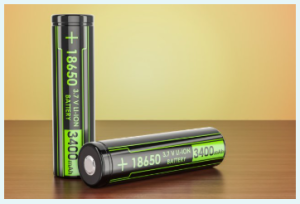
Lithium batteries
To exceed 100 kilogram (220 pounds) of non-acute hazardous waste to be a small quantity generator, it takes about 2,000 of the 18650-type lithium-ion batteries.
Nicotine e-liquids
To exceed one kilogram (2.2 pounds) of acute hazardous waste to be a large quantity generator, it takes greater than:
- 1,000 Juuls (~ one milliliter of e-liquid in each Juul pod)
- 76 Elfbars (~ 13 milliliters of e-liquid in each Elfbar)
- 200 full 5-milliliter vials
Step 3: Recommended disposal options
| Generator Category | What to Do and Know |
|---|---|
| VSQG
Very Small Quantity Generator
|
|
| SQG (Small Quantity Generator) or
LQG (Large Quantity Generator)
|
|
Solid and Hazardous Waste Branch
Hawai’i Department of Health
2827 Waimano Home Road #100
Pearl City, Hawai’i 96782
Phone: (808) 586-4226
Email: [email protected]
